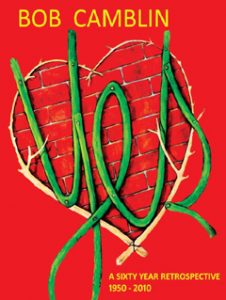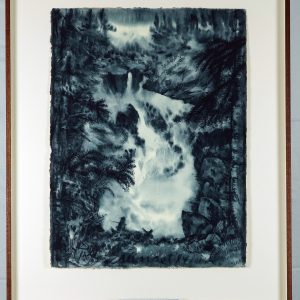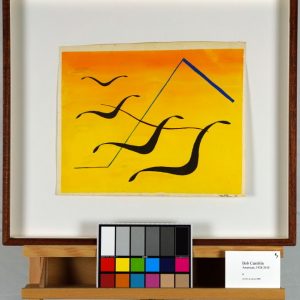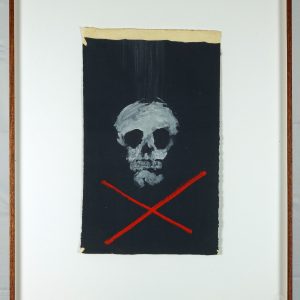Description
4 Now, no datePen and ink
Signed
20 x 27.5 in. (image)
32.5 x 40.75 (frame)
original, includes certificate of authenticity from ArtTrust
The etching (For Now) captures the transience of life through an arrangement that appears to mimic a natural landscape yet is composed of unlikely materials like pots and containers. In Zen philosophy, this speaks to the notion of “Mu” (emptiness or nothingness), where objects are stripped of their original meaning and purpose. Here, mundane objects are given new life as part of an artificial yet serene garden. The depiction reflects the interconnectedness of all things, where each object’s existence depends on the viewer’s perception, aligning with Zen’s idea of non-duality.
The I Ching hexagram most resonant here is 23, “Splitting Apart.” This hexagram symbolizes decay, decline, and a return to fundamental elements. The plants in this image seem trapped in states of growth and decay simultaneously. The use of discarded materials as vessels for life suggests a cycle of transformation, where destruction paves the way for creation. The cracks and rough textures in the artwork reflect the hexagram’s message that even when things fall apart, there is potential for renewal.
This work suggests an exploration of life’s paradoxical nature—growth amid decay, renewal through destruction. The seemingly disparate elements unify to form a coherent whole, challenging traditional notions of beauty. The drawn objects evoke a Zen garden’s meditative quality but with an ironic twist; instead of stones and raked sand, we have pots, trees, and abstract forms. This juxtaposition offers a commentary on the artificiality of human attempts to control and imitate nature.
The work draws from surrealism and conceptual art, bridging organic forms with mechanical and man-made elements. The juxtaposition of living and non-living materials suggests influences from artists like Max Ernst, known for his naturalistic surrealism, and Giorgio de Chirico, who used paradoxical spaces. By transforming mundane objects into contemplative scenes, the artist continues the tradition of still life while simultaneously deconstructing it, questioning the role of art as mere representation versus a tool for deeper reflection.
This layered approach encourages the viewer to ponder themes of impermanence, the relationship between nature and artificiality, and the silent stories embedded in everyday objects.
*Shipping cost will vary, please inquire at sales@camblingallery.com before purchasing.
Currently ships from Oregon, USA
Member of artnet? Apply for a discount! Inquire about intergallery and permanent loans for museums.
“4 Now” was featured in his Yes Retrospective
Reproductions of this drawing are available in multiple sizes!
Click here to use our high-resolution viewer!
This artwork is available with a non-fungible token to ensure traceability and transparency of provenance.
The royalty factor – Unlike traditional artworks, such as paintings, mosaics, statues, and the like, NFTs can be programmed to provide royalties to you every time the painting (and token) is sold and resold – for eternity. That mind-bending Camblin you sold could be worth millions one day and provide income for your great-great-great grandkids!
Anti-forgery – The central idea underpinning NFTs is that they are built on the blockchain, which is meant to offer advanced security. Think of it like an un-erasable and un-avoidable copyright.
Easy authentication – Another compelling aspect of NFT art and NFTs in general is the ability to quickly and easily authenticate items, as the record of ownership is scrupulously kept on the blockchain.





